A session on “Accelerating Investment in Pakistan” was held as part of the Pakistan Pavilion on 19th January, 2023 at World Economic Forum at Davos, Switzerland. It was held under the auspices of the KCFR and was also hosted by the Sehgal Family.
The event was moderated by Salman Ali, CEO, VRG.

Cdr (R) Sadeed A. Malik Secretary General and CEO, KCFR: Honorable Sherry Rehman, Minister of Environment, Government of Pakistan. Excellences, distinguished guests, Patron in Chief and former Chairman of Karachi Council on Foreign Relations, Ikram Sehgal. Ladies and gentlemen, Assalam-o-Alaikum, Guten Tag, Bonjour, good afternoon and welcome.
It is a great pleasure and honor for me to welcome you all to this auspicious occasion at this wonderful environment and place. Normally on such occasions, I introduce Karachi Council on Foreign Relations, but as most of you were present yesterday, at the lunch also, so I will not go through all that, because there is a line of speakers on a very important topic today. However, very briefly: Karachi Council on Foreign Relations is a prominent think tank at Karachi and we hold seminars and meetings on different subjects which are produced in our journal and some of the journals are lying on your table and that’s your copy. Our recent speakers who participated in our seminars, were President of Pakistan, most of the foreign ministers have attended our seminars and meetings. Almost all the ambassadors at Islamabad, when they come to Karachi, we host them. Consul Generals, intellectuals and whenever foreign delegates come, they come and address us. We have signed MoUs with different organizations and in different countries, recent most was with the Swiss Asian Chamber of Commerce. We assigned an MoU with them and also University of Le Havre. Thank you very much for joining and may I now request honorable Sherry Rehman, to address the audience and thank you very much!

Sherry Rehman Minister of Climate Change of Pakistan: Thank you very much, Brigadier Sahab and Ikram Sehgal, the Karachi Council on Foreign Relations and all those who brought, I’m told, an investment lunch together, so here I am to bore you again after the breakfast and very quickly, pitch to you what is called Pakistan’s largest adaptation project, for the climate stress that we are facing, the emergency I spoke about at breakfast for those of you were there. Somebody just asked me, what is the forward-looking plan, well this is one of South Asia’s, or Asia’s, one of the largest adaptation projects. It’s called the Axis of Adaptation, so if you’re an investor and you’re not interested, maybe you can step aside, but I’m just quickly going to run through this, it’s a short video. This is about the Indus River which is like the jugular vein of Pakistan. It is situated exactly where it is in the heart of Pakistan, it is what the civilization has cohered around for 5,000 years. So this is a project that we pitched at the Reconstruction Conference, the Resilience conference, this is one of them, and it was actually conceived before the great flood happened, because as you know, Pakistan is situated in one of the largest floodplains of the world. Now this obviously deals with river floods, we this year saw Monsoon but we are hoping and have planned for a living menu of 25 interventions, we’ll just share them with you. We have identified 8 as priorities because obviously that’s a very large menu to invest in. It is not bound by any restriction, it is shaped as an ongoing project and we are at a pre-feasibility stage which rounds off all the interventions to from anywhere from 11 billion dollars to 25 billion dollars. We now have the funds, which we pitched at the Geneva Conference last week, thanks to the UNEP, there’s a commitment to projectize these to make bankable projects of at least the flooding interventions.
Now 15 of these interventions you’ll see very quickly, actually intervene, to save the area, to adapt, to build resilience against flooding, so Pakistan’s problem is, the heating will not go away, the global warming which Pakistan did not cause, will not go away on its own so, what do countries have to do? They have to adapt and protect their populations and of course their natural resources, so this is one of the world’s largest nature-based projects, they are called nature-based Solutions. It is a large overarching, inter-provincial project because the Indus flows through North to South, all our provinces. The Ministry of Climate Change has taken along with the FAO and the United Nations, all provinces on board over an extensive consultation project, because it goes through their areas and they will be the enablers, and you know, actual executors along with the investors. So why we’re doing this is because the Indus is one of the largest rivers around which the civilization is built. I mean, it feeds, nurtures 90% of Pakistan’s population either directly or indirectly, so if the Indus is unwell, which it is today, because of man-made, because of our interventions, our dumping, our effluence, a lack of respect for one of nature’s greatest resources, it is now the fourth most polluted river in the world. If it was alive, it would say, let me breathe, let me live, and these days – large bodies of water are now accorded the status of entities by themselves.
This great river which has nurtured the Indus civilization as well as Pakistan, and we have made one of the largest man-made irrigation system on the Indus River in the plains of the Punjab, some of which do come down to Sindh. It is the granary of the country. It is under extreme stress right now particularly after the big flood, and so we wanted to share this with you, to provoke some thinking into perhaps, generating consortium financing, investing in resilience and, looking towards this great axis of adaptation for the country. If the Indus is back to its health, if we can bring the flooding under control, those 15 interventions out of 25 address flooding in one way or the other. Ground water management will not just improve the health of the cities living off it. All the cities of Pakistan live off the Indus except Quetta, they are all clustered around like all great civilizations, ancient and modern, they cluster around rivers because rivers breed life. Without much ado I’ll just request you to play a short video and then a quick run through of the presentation. I will leave after that, if anyone has any questions, my colleague, Saad Tammam will answer them for you. Thank you!
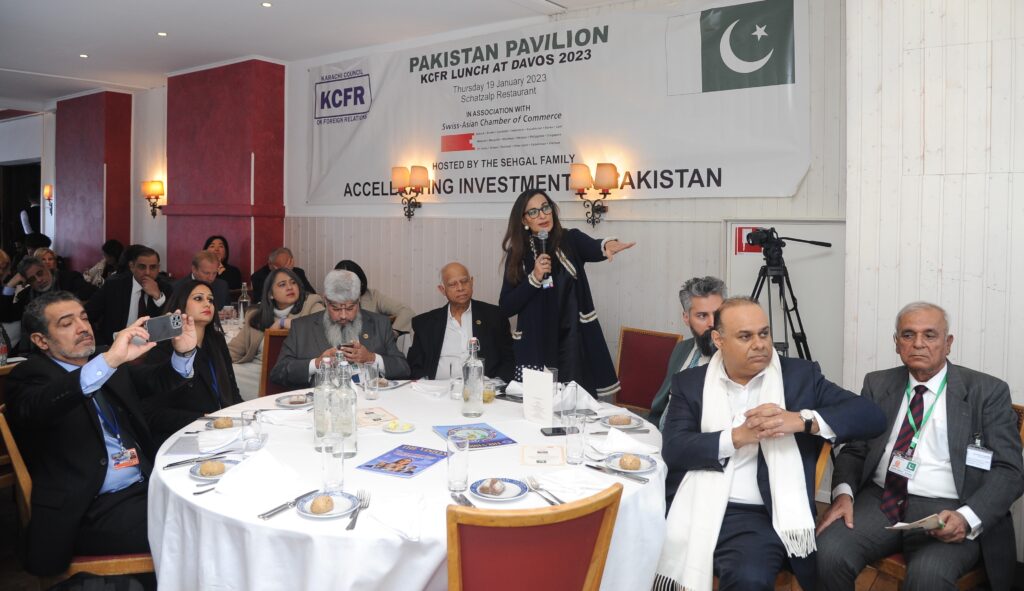
Thank you for that and quickly, if you allow me Mr. Sehgal and others here, I know I’m intervening in your lunch menu but I wanted to share the living menu that you might want to intervene in. When people ask what can we do, well, here’s your call to action, our call to action to you. Create investment coalitions, what I call the Coalition of the Willing, not for wars but to save the planet, and our lifeline. Please… So what does the Indus River system mean. I’ve spoken about this, more than 80% of Pakistan’s arable land is irrigated by its waters which are all under stress right now. Nine out of the ten largest cities in Pakistan are situated within 50 kilometers or less of the waters of the Indus, and more than 90% live within or rely on three quarters of the Indus Basin.
It has been documented to support life over 5,000 years but today I don’t know if it can carry on for even another – we’re ambitious to say 100, I see limits to that, I see a cap at 50. It is because we are in the largest flood plain. We are also among the 10 most vulnerable countries to climate change. I would say last year we were the most vulnerable other than Somalia and flooding has now become more frequent. It has become deadlier. River floods is a norm but now with the monsoon coming in, Glacial Lake Outburst Floods tripling, we do not have the luxury to wait. We have to adapt. The climate is changing, disruption of rainfall patterns, that is what extreme weather is about. Poor infrastructure for water management we need huge investments in that and part of that went into the Reconstruction Resilience conference. Increasing pollution and degradation of the soil, the salinity is very high in large parts of Sindh now, which was half the bread basket of the country. After the flood, the soil still has to be reclaimed. Now there is a growing demand for action from citizens. We believe that it is crucial to work with people and not just top-down silos, governments trying to implement policy, it doesn’t work. Climate action depends on everyone and so this call to action, involved communities, consultations. There are civil rights actors also, so for climate action, there is no cohesive effort to reverse the ecological degradation of the Indus Basin. It is choking on the plastics, on the effluence, on excessive consumption and overfishing.
This is, as I said, an umbrella initiative and within the boundaries of Pakistan, extensive consultations, interventions are aligned with global best practices, which focus on green infrastructure and nature-based approaches driven by the community. Based on the proposed targets as I mentioned, 11 billion to 17 billion US Dollars, over the next five to fifteen years from public-private, civil society and the development sector. So this is the tree map. You see the governance, the pollution and under it, you see the finance, the livelihoods, tourism, culture and it ends towards groundwater, and the communication and awareness platform for it. We have shown you the Indus. These are the seven priority projects identified.
Do we have the hyperlink to each, Saad. Yes, please click on it. These are the green and now all of them are not heavy capital-intensive actions – the community pond for instance, they’ve all been costed. It’ll only be 1 billion to 1.5, and they will create a recharge for the water stress.
They will involve the community, they’ll be modeled on public private partnerships and, they will work. We’ve got the flood resilience meter going on, so these will manage the groundwater supplies and 90% of domestic water in rural Pakistan, 70% of domestic water nationally, and over 50% of agricultural water is being used, and Pakistan will be water scarce by 2025. Here’s the dilemma, there’s water flooding everywhere and yet it is not able to be used for agriculture or domestic and industrial consumption. Water scarcity is a real and present danger.
Before the flood came, this was what I was focused on. Water management is Pakistan’s frontline climate challenge and the Indus, of course, next. Green infrastructure for flood control and ground water recharge, this is one of the bigger ones and we would like interest in it. If one of you can put a consortium together, we will assist, we will be making the technical studies in 30 million to 35 million. It’s not huge but this actually looks at flood control governance. Now this doesn’t cost too much, but you need sustainable groundwater governance because, this is the world’s second most, globally the second most stressed aquifer in the world and it is one of the largest.

We are one of the largest exporters of groundwater reflecting the volume used in country’s export projects, particularly rice, leather and textiles, so here we are. This is very important to me. Indus cleanup, industrial and urban affluent treatment, it’s a medium time frame, 3 billion to 4 billion and look at this one. Pakistan treats less than one percent of waste water in the Indus basin. Now, very far from any of the goals we’re looking towards, despite existing legal provisions, 99% of waste water is discharged, untreated in open drains which eventually enters the Indus system and there becomes the river that starts choking on our dumping in it.
So this is the one that I really want to focus on. It’s a little capital intensive but you know of the 388 cities in Pakistan only 8 have waste water treatment facilities with some, only partially functioning. This is how any flood of the future will also choke when it starts going out, so storm drains, left bank outfall drains. Some are very capital intensive but the menus laid out here. Salinity control; very important because left bank outfall drain, most of Sindh is now saline soil, so again, very useful for flood resilience – 200-350 million. Next, climate resilience on the Indus Delta.
This is a Delta you know, managing the coastline, of a key factor is loss of mangroves but Pakistan actually has done well from the 1990s, it’s not in here, we have actually increased Mangrove cover as a carbon sink to the level of 300%. Mangrove cover has really gone up and in fact the province of Sindh is already trading on the voluntary markets, the carbon credits that flow from it. Pakistan is one of the largest carbon sinks in the world in its mangrove plantations. We of course have them in our northern forests as well, those densities are high. We are creating carbon frameworks for them too but this needs to be resilient. Sustainable aquaculture and fisheries management – this is crucial to the marine life that lives in there.
This is a year of species extinction as you know and the famous Indus dolphin is the only species – this is unique to the Indus and we are trying, it is only here in the whole world that this species found, we’re trying to save it. This is the whole list of 25, we can provide it, it’s on the website, you go to the link and you can build your coalition for climate change adaptation for Pakistan. This is where we need help, this is the plan for the future and we hope that you will understand and appreciate the plan because hope alone is never enough. I always say you have to have a plan so this is the largest adaptation project. Thank you very much!

QUESTION & ANSWER SESSION
Question: “Just in terms of the projects that you’ve listed out. Has any of them actually been initiated on the ground, because if you’re asking for support, we need to show that there’s something which is happening actually on the ground, so could you elaborate on that.
Sherry Rehman Minister of Climate Change of Pakistan: No, they don’t require ongoing, there is no requirement for ongoing projects, but we have tried to build, as we say a living menu of umbrella interventions, so you can pick a small intervention to make, you may be a small investor, you may generate 100 million, you can pick on the community pond. Some are ongoing obviously, like the wastewater management and all, but they’re not at scale. They need to be scaled up to make this intervention real, and for that we need a pipeline of climate financing, which we try to generate. But, what’s happening now, instead of the money going here, all of it is going to reconstruction after the flood. Human lives have to be saved in the front line. I am worried that countries on the vulnerability arc like us, will be caught in a recovery trap, before we rebuild which takes two to three years. You’ll have the next maybe not such a big flood – but there you are, so this is my worry and this is why I’m pushing this because work must go on. Thank you.
Question: My name is Muhammad Zubair. I am from Al-Huda Center for Islamic Banking and Economics. Pakistan is generating a lot of carbon credit, but unfortunately the carbon credit is not materialized in international exchanges. For example, according to international standards, if any microfinance institution or bank, finance a cook stove to a family, they have two carbon credit. If that financing is for 5 years, it means that 10 carbon credit. The price of one carbon credit in international exchange is 20 dollars, it’s mean we can get 200 amount by having materialized the carbon credit. We have solar financing, we have solar two-way financing, we have a lot of plantation in Pakistan but unfortunately those carbon credits are not available in international exchange, so what is the solution for it?
Sherry Rehman Minister of Climate Change of Pakistan: So here’s the thing I just addressed it, many countries don’t have their own carbon frameworks. We are creating one and Pakistan is already trading on the voluntary carbon markets, I already said so. They’re trading the mangroves. Khyber Pakhtunkhwa, the provinces are trading. We’ve allowed them, they are going ahead and carbon credits are coming into the country. I’m sorry that you don’t know, it’s one of the biggest projects in the world the Indus Delta Blue and it’s trading in the international market. There is no such fixed carbon price anywhere in the world. I don’t know where you got that. Even in the United States, different states have different carbon frameworks and different pricing mechanisms which is a great flaw. I think standardizing it institutionally is very important. Most countries don’t have a carbon framework, I’ve been in government exactly seven months, I will make sure you have one before we leave. Thank you.
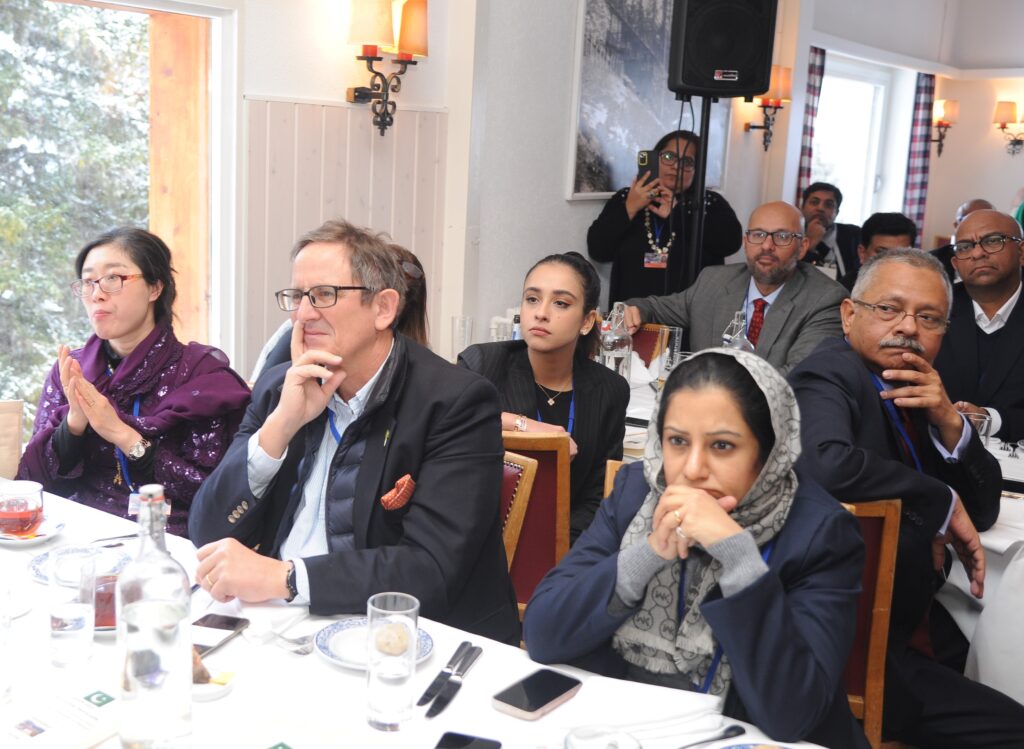
Question: My name is Meral Malik, I’m from BMA Capital. I’m aware that there is a certain limit on the percentage of renewable energy that the grid, the National Grid is allowed to buy, so is there a plan to change that? There’s a cap on the amount of renewable energy from generation sources that the national grid is allowed to buy so is there a plan to change that?
Sherry Rehman Minister of Climate Change of Pakistan: There is a huge power policy shift being discussed in government. First of all, Pakistan needs to use its energy in a smarter way. I mean, I before coming here, I bought my new pair of snow boots at 10 o’clock in the night. I was stunned, I came out of office I said I don’t really have them, and I slip very much in this so let me buy tracks, shoes with tracks, sensible shoes. My office said that you can buy it now, it was 10 o’clock in the night. Where do markets remain open and this is what we’ve been trying to persuade retailers, restaurants, you’ve got to cap it. Otherwise, also there is a plan to go renewable 10,000 megawatts immediately through the next phase, which is all government buildings, at least federal government have to be solar. They will not be sucking up energy. For instance the Parliament building, I’m very proud to say actually sells energy. We’re completely green and we sell energy to the grid, so that’s what net metering is about. Yes, there should be, I don’t know about the caps being moved very soon, but there is a lot of work being done on power policy, which is being done through the Energy Ministry. Thank you.
Question: Assalam-o-alaikum, Habib Paracha. How are you, madam? With relation to the flood victims you had mentioned that there are lakes in Sindh which are now just going to be there, so is there some way to mitigate that flood coming again by maybe moving these people to a different location, so that they don’t have to deal with a similar kind of incident as this year, so that they don’t have to go through that again.
Sherry Rehman Minister of Climate Change of Pakistan: So the task alone is not possible. Put your shoulder to the wheel and get over there and offer them land titles in a better place. Their homes are gone so we can’t police people, you do not police people in open societies, you create a regulatory framework. We’re trying to create land titles for people in new areas but there’s only so much land and there is fair amount of land to entitlements, first cultivation rights obviously or land grazing rights, because livestock is one of the means of livelihood, one of the big ones. We’ve got to create the land while we are still rehabilitating people for this winter, so please come there and Sindh Chief Secretary will help you to assist. It is not something the government can do on its own, even in one year. I’m not aware that any government can actually, New Orleans took a long time, it was a fraction of this flood and a fraction of the displaced, so the task is Herculean but we have to keep at it, and give people hope, but with that a means of livelihood. The private sector has got to be involved, the famous philanthropy of Pakistan has got to do its share. It’s been doing it but as they say, you have to do more. Thank you!
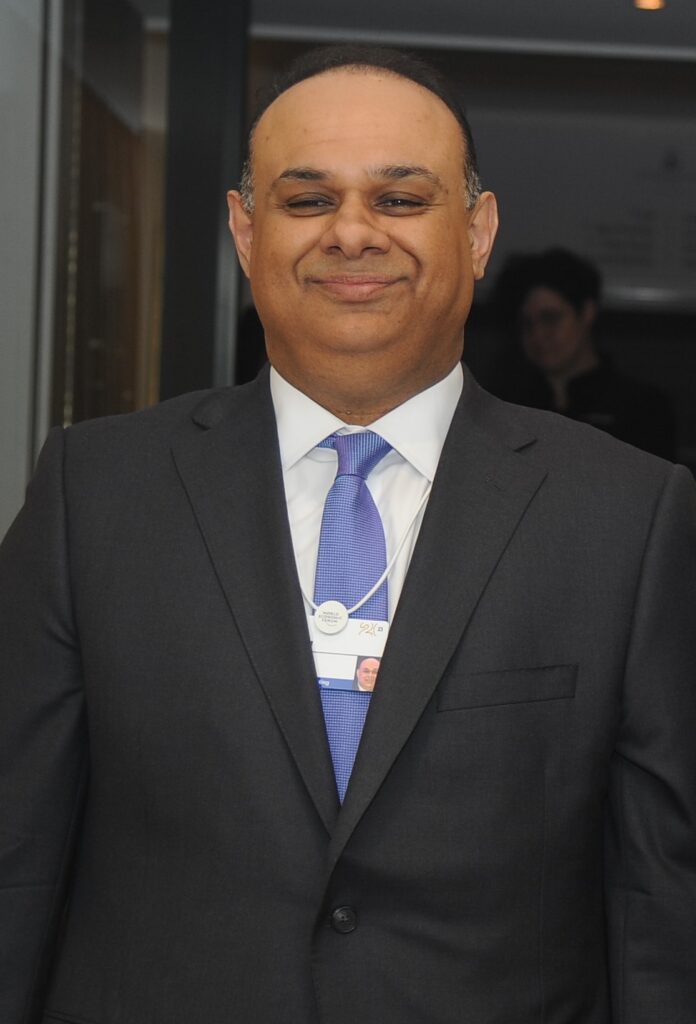
Zarrar Sehgal Chairman Pathfinder Group: Thank you very much. Again, I’m sure the Senator and Minister is sick of hearing me say nice things about her, but we really appreciate the fact that not just obviously the breakfast yesterday where you said some really gracious words about the group and the family, and we really appreciate it. We’ve had a number of guests before that thanked us, but so it was very gracious of you, but also making time today, I know it’s a busy schedule.
I’ve seen your schedule in the Congress Center and I know you’ve been running pillar to post and it is difficult, snow shoes or not. It’s very difficult to walk in Davos back and forth so we really appreciate your presence. We, from our side as Pakistanis, we wish you the best of luck. We hope you succeed because then Pakistan succeeds. I think we faced a calamity of global proportions.
I do want to mention since this lunch is also co-hosted by KCFR, you know the Karachi Council on Foreign Relations so on behalf of that I want to thank you as well, on the behalf of the Board of Governors, Mr. Sehgal obviously serves as Patron in Chief, so I want to thank him as well, but on behalf of the entire Board of Governors of KCFR, we want to thank you as well, so thank you very much for coming.
Sherry Rehman Minister of Climate Change of Pakistan: Thank you to Mr. Ikram Sehgal, to KCFR, and to all of you. I asked to do this because I really want to involve Pakistanis and the international community and Ikram and Zarrar, all of you provide the opportunity, so anyone who wants to see things move, because project, capital, governments, all of this move very slow. Connect the dots with us, come, invest in the living indus. Thank you very much, thank you Ikram for your service to Pakistan, Ikram and Zarrar, this whole family needs to be thanked for their service, untiring to Pakistan. Big hand.
Salman Ali, CEO – VRG: I’d like to introduce a very talented lady, who works with the U Microfinance Bank as a Chief Commercial Officer and played a vital role in UBank’s journey from one to ten and right now she’s sitting with us, and she wants to share her thoughts with you guys, so over to Ms. Marium.
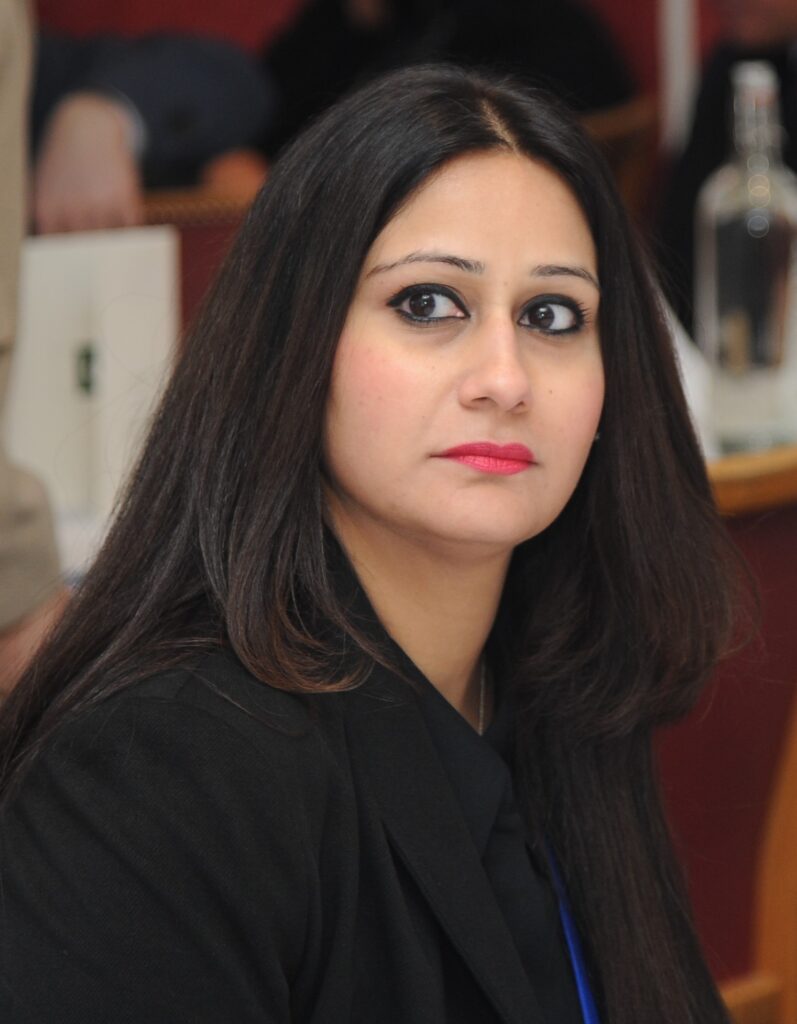
Marium Pervaiz Chief Commercial Officer, UBank: Very humbled to be here and I would especially want to thank the Pathfinder Group and especially Ikram Sehgal Sahab for this opportunity, so let’s all take a deep breath and let’s imagine a clean white canvas and now let’s imagine a splatter of a rainbow, rainbow colors, that is Pakistan for you. I am Pakistan, I am a population of 220 million people out of which 85% is unbanked – opportunity. I am a population where 51% are women – opportunity. I am a country where more than 5 million SMEs are residing right now, and are contributing significantly to the GDP of the country, that’s what Pakistan is. I’m also 376 billion dollars as far as the total GDP size of the country is concerned. I am, ladies and gentlemen. the bread basket of the world. This is what Pakistan is all about, so when we look at investment in Pakistan, it is very important to look at it from a very different perspective. It is important to look at the sectors that actually understand Pakistan, the sectors that breathe Pakistan, the sectors that have access to Pakistanis. This is where I want to talk about microfinance. Microfinance for the longest time, I think has been largely misunderstood. We as microfinance practitioners, and I’m extremely humbled and proud of the fact that I represent a microfinance bank here, U Microfinance Bank. We are where the rubber meets the road. We are in essence Pakistanis.
About five years ago, when I joined UBank, that was about 12 long years of my life spent in a large commercial bank and when I joined UBank, I sort of realized that I had lived my life in a bubble. A bubble that resides somewhere in a corner of Pakistan and sees Pakistan very differently. For me UBank was not just a journey of self-discovery, it was also a journey of discovering Pakistan, so when you talk about investment in Pakistan, you need to work with a sector that understands the larger segment of the population, that understands the credit behavior of the Pakistanis, that understands how to work with income proxies. That, ladies and gentlemen, is the microfinance sector. So when you talk about investment, whether it is housing, whether it is access to finance, to SMEs, whether it is health, it is the microfinance sector that can really play its part. I look at microfinance as the real gateway through which you can really create impact as far as Pakistan’s growth is concerned. Another important thing I would like to mention here is, that we’ve seen a lot of change as far as mindset is concerned with respect to the stakeholders in Pakistan, investment society especially.
Our partners, our Commercial banking partners, even the government, the regulator, they’ve all now started to really understand how microfinance is the sector that can really play an impact as far as moving Pakistan forward is concerned, so now if you look at any sort of regulatory measures, or if you look at large programs that are designed to create impact in Pakistan, whether it is initiatives with respect to housing, the regulator will now turn to microfinance banks, because they understand that we really are the executing agents, that can really execute and work on the agenda of housing for instance.
Bringing in the use of Pakistan, giving them access to credit – that also is something that now the regulator is understanding is where the microfinance sector can really play its part, and now they’re talking to us, understanding the role that we can play, because like I said, we are the sector that understands Pakistan better than any other sector. We’re talking about investment, so I think it is important to also talk about numbers, from the investment perspective; everybody wants to look at whether it’s making money for you at the end of the day, is it commercially viable? Is it profitable? Is it sustainable?
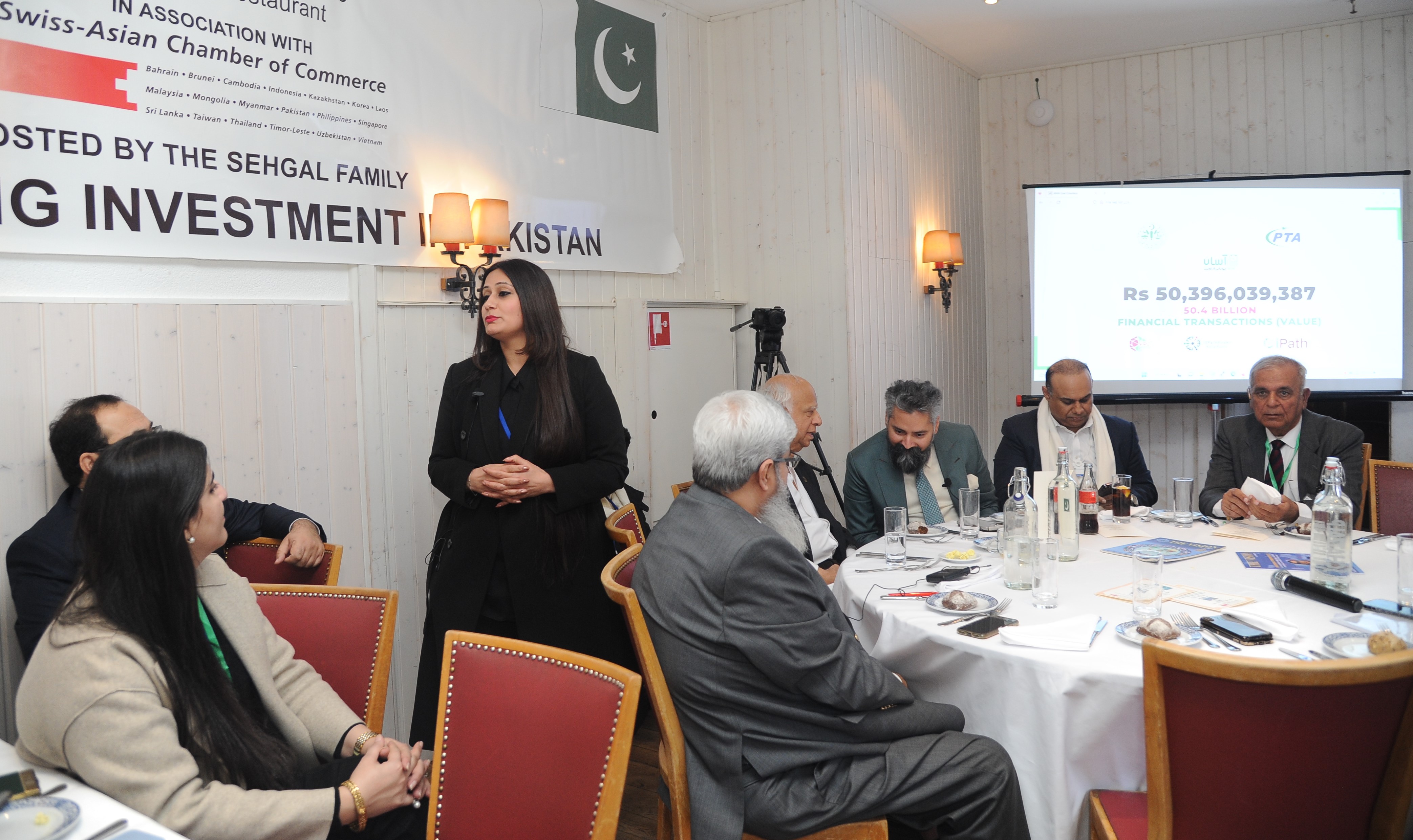
These are some of the very important, normal, regular kosher questions, that sort of you know, come to anybody’s mind and this is where I want to talk about UBank’s journey in terms of numbers. A team, totally homegrown, a journey of just seven years which for a financial institution, is a very short span of life, and in these seven years, the journey of this microfinance bank, this financial institution, has been miraculous.
As far as the total assets of the bank are concerned, at this point in time, we are standing at a staggering 220 billion rupees, which is close to a billion dollars in terms of total asset valuation, in just seven years. As far as the total revenue numbers are concerned, we’re looking at about a hundred million dollars as far as total revenue numbers are concerned. In just seven years, we’ve seen the asset book grow to more than 60%. The profit numbers have grown by more than 77% and the story is just beginning. This is how it makes commercial sense for you, if you put microfinance or if you look at microfinance as maybe a one-stop shop to accelerating investment, as far as Pakistan is concerned. All of this has happened despite all the doom and the gloom you hear about as far as Pakistan is concerned. You talk about floods, you talk about inflationary impacts, you talk about severe macroeconomic situation but in spite of all of that, if you’ve been able to build a business model that is resilient, that speaks of diversification as far as the asset managing of the asset portfolio is concerned, and that talks about diversification as far as generating revenue through multiple streams is concerned.
We have created a living example of what it can really mean to invest in a company that can really take Pakistan forward. So I’m leaving you with this thought today, microfinance as one stop shop for investment in Pakistan so let’s together take Pakistan forward. Thank you very much.
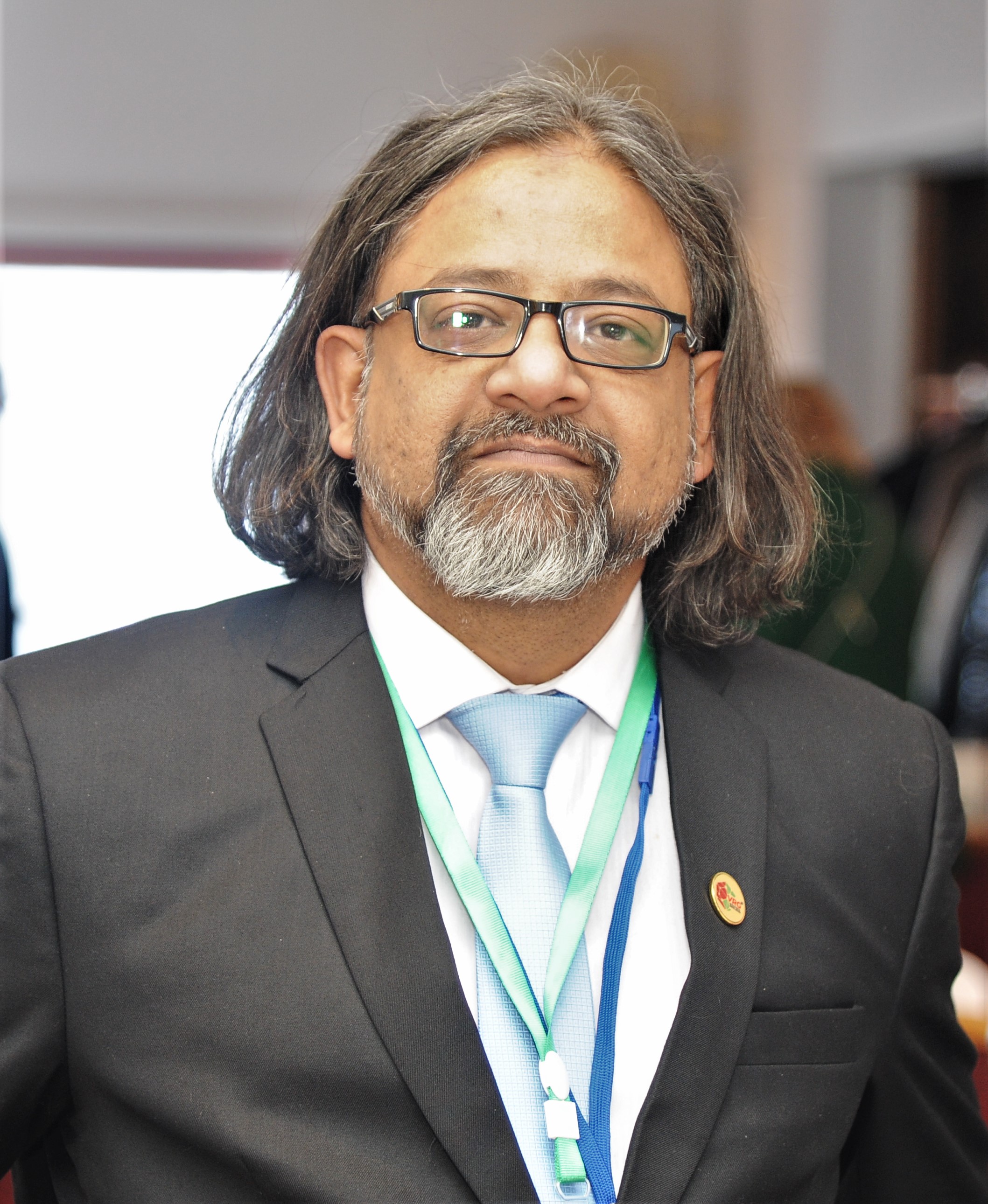
Salman Ali, CEO – VRG: Our next speaker, a very experienced banker. Has a very diversified portfolio in different areas of not only banking, but also on consultancy side. He’s currently the MD and the CEO of Pakistan Mortgage Refinance Company, Mr. Mudassir.
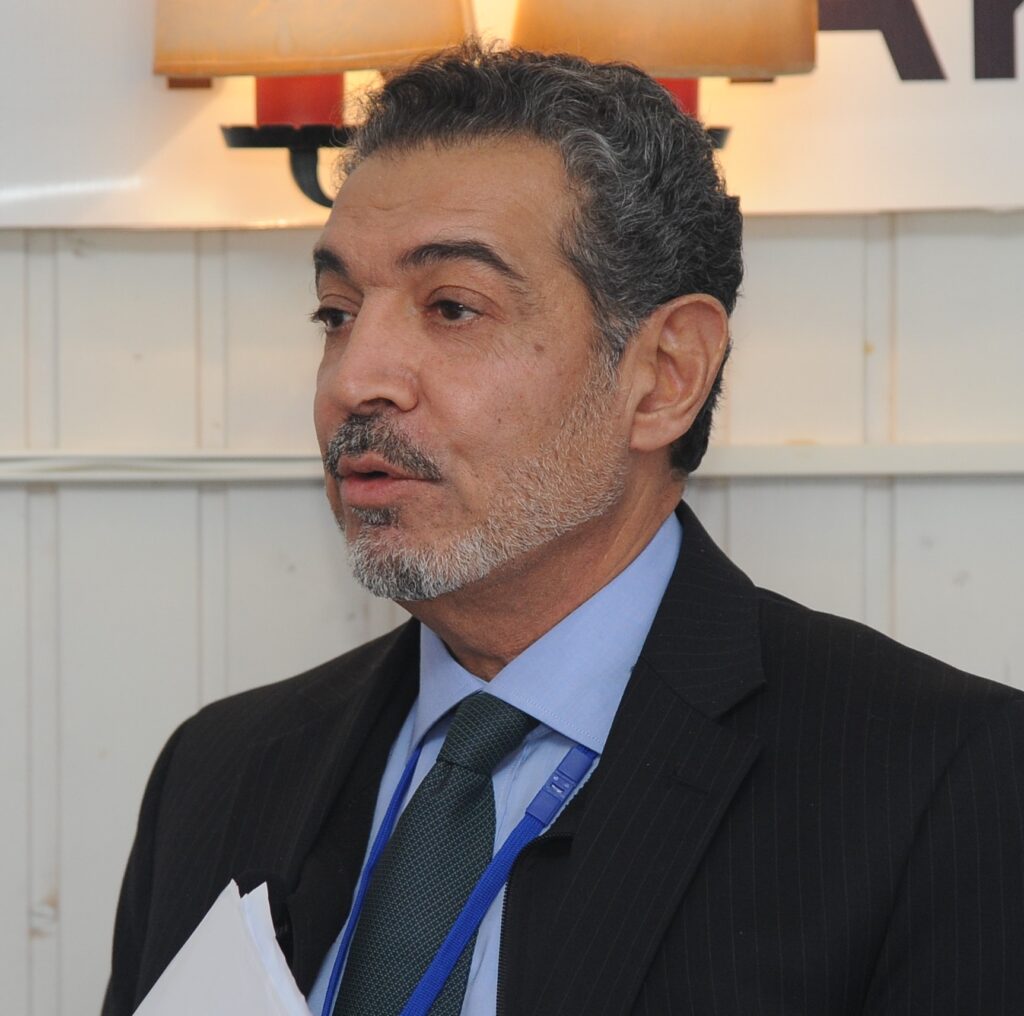
Mudassir Khan CEO of Pakistan Mortgage Refinance Company: Thank you Ikram Sahab, thank you Zarrar, thank you Pathfinder group for inviting me and it’s a pleasure. I wanted to do it in a different sort of a format, but I think I’ll run through the presentation briefly, give you some numbers and then maybe leave some thoughts, that we can maybe at the end have a discussion or a little bit of a debate, so that we know where we are and if we are going to do things in Pakistan, what will it take to get there. I think the Minister also identified in terms of the projects that, there is a roadmap that you showed, how do we get there? I mean there are lots of issues in Pakistan, so we need to fix our house as well and also invite investment and opportunity, to show the opportunities to the investors at the same time. I will briefly run through the presentation not taking too much time in terms of the slides, but then actually take a little more time in terms of the discussion, so please next slide.
So here the only point that I wanted to make that I think Mariam also pointed out, in terms of the number of population of Pakistan. We are about 230 million, and the other number that I want to leave with you is the 1.98% population growth rate that Pakistan has. Now with that, the main thing to think about is that 1.98% growth this used to be about three percent, Pakistan has done phenomenally well in the last decade or so, to come down to about below two percent but still that number of 2 percent brings about 4.5 – 4.6 million additional population added to Pakistan’s population every year, and that population is equal to some of the countries in Africa and even in Europe, and even in Middle East.
So the size of a small country that we are adding to Pakistan every year, and that requires a lot of investment, that requires a lot of infrastructure to be in place, whether it is road network, whether it is homes, whether it is agriculture, whether it is water issues, so all those issues are extremely critical. Because at the level that we are growing in terms of the population in Pakistan, so we need to control that. Also at the same time, but until 2030 you’ll see a shift in terms of the world population. Pakistan is fifth largest, there will be a shift in terms of the population ranking of various countries, so we have that slide but I don’t think I want to run through that.
The other slide – a number that wanted to leave with you is the FDI and the graph that you see here, so if you see the FDI in Pakistan, it’s not a graph that is very impressive, it’s not a graph that is showing enough for growth trend, so it’s a graph that shows that we go up, we come down, we go up we come down, and the highest peak that you have touched in terms of FDI in Pakistan is about 3.5 billion in the last decade. Last year was about 2.6 billion, so very small number in terms of the foreign direct investment that comes to Pakistan and why is that? Why is this graph not a graph going up every year? It is not showing enough upward trend every year, so we’ll have that discussion also, but I just wanted to give you that and of that investment of that FDI, we only have a contribution of the construction and housing industry, only of 79.4 million, and the construction industry in Pakistan only contributes about 2.5 percent to the GDP.

This number in Bangladesh is about double this, if you look at India, it’s probably triple this, it’s about seven percent. If you look at Turkey, it’s at least 10 times that, so what I’m trying to say is that the housing and construction industry, the infrastructure industry can give at least, add 3% to 4% to the GDP, if we actually focus on it and we bring investment into this sector, so that was the main point.
Going forward, next slide please. SDGs, I wanted to touch upon that, so Pakistan was one of the first signatories in terms of the adoption of the SDGs – the Sustainable Development Goals of the UN and we did make some progress in some of the areas. We haven’t made that great progress in some of the other areas but of the 17 SDGs that are there, 14 of them relate to somehow where there is an impact of affordable housing and construction sector on those 17 SDGs, so 14 of them – construction and housing industry will contribute to achieving those 17 goals. Affordable housing of the SDG 11, specifically the goal number is 11.1.
Before going into that discussion of where the issues and the opportunities are, Pakistan Mortgage Refinance Company was set up about in 2016. We are a development finance institution, we started our operations in 2018, mid of which we received that license. We are primarily a private sector owned, but do government shareholding. We were also to bring in IFC as a shareholder of PMRC and in the last four years. We have all other major banks as part of our shareholders. Essentially we act as an intermediary, I don’t know if you’re familiar with JAGAMAS of Malaysia or Fannie Mae and Freddie Mac and in the US, but it’s a refinancing organization, so we act as an intermediary between the mortgage lenders, the primary lenders and the capital markets, that’s the main objective.
What we have tried to do is to change, the mortgage structure of Pakistan. Unfortunately, and that’s the reason why the Pakistan mortgage market did not take off, you will see those numbers in next slides. We still have only 0.3% of GDP in terms of mortgage to GDP ratio. That number in Bangladesh is about 3.6%, that number in India is about 11%, that number in Malaysia is about 36%, and in some countries like Singapore that number goes even beyond 100% of GDP, but what we have been able to achieve is that we have been able to bring in fixed rate mortgages.
We do pre-financing, we do refinancing, we do risk sharing, provide guarantees, we have been able to change the structure of mortgage financing in Pakistan from a variable rate fund financing only to an adjustable rate mortgages, which has a fixed rate mortgage as well as an adjustable rate, depending on the how the customers’ requirements are. What we have also tried to introduce in the markets which is very important and critical is minimum quality standards in terms of mortgage financing, as well as introducing for the first time environmental and social safeguards in mortgage financing. So we do require banks to put in systems, so that the environmental social safeguards are being adhered to and they ensure that in the projects that are being implemented, whether it is low cost housing, or any other real estate projects, that these guidelines are adhered to. Of course, women participation is absolutely essential for us as well. Encouraging that, we have actually we give discounts on our funding where we see that the 10% of the portfolio of a bank, of mortgage portfolio, consists of women ownership, so we give a discount on pricing to the entire portfolio.
That’s how we encourage banks to actually get women ownership, not co-borrowers, but co-owners in terms in the properties, in housing. Next slide please. These are just some numbers, Pakistan mortgage market was very low a few years ago, we were at only 100 million and 100 billion and stayed at that number, it was below that number 90 – 89, so we were pretty much stagnant in almost about two decades. But last two three years with the government’s focus, we have seen immense growth and that number has almost doubled in two years, so we are now sitting at a mortgage portfolio of the industry at about
200 billion. That number primarily came in, the last 100 billion came in from the Mera Pakistan Mera Ghar scheme which was actually a low-cost housing scheme.
You’ll see some numbers later on because there are lots of incentives given by the government, in terms of the construction industry as well as to the mortgage industry, both by the government as well as by the State Bank of Pakistan which is the central bank. MPMG, the 100 billion that I said was actually the numbers we have is about 3,000 families benefited, 3,000 individual people benefited with the family size of each of about five on average. Total people benefiting was actually 15,000 and that also shows that the number of the average size of a mortgage was about 3.5 or below 3.5 million which is a very small number and shows that actually, that amount went into low-cost housing, so it was very encouraging.
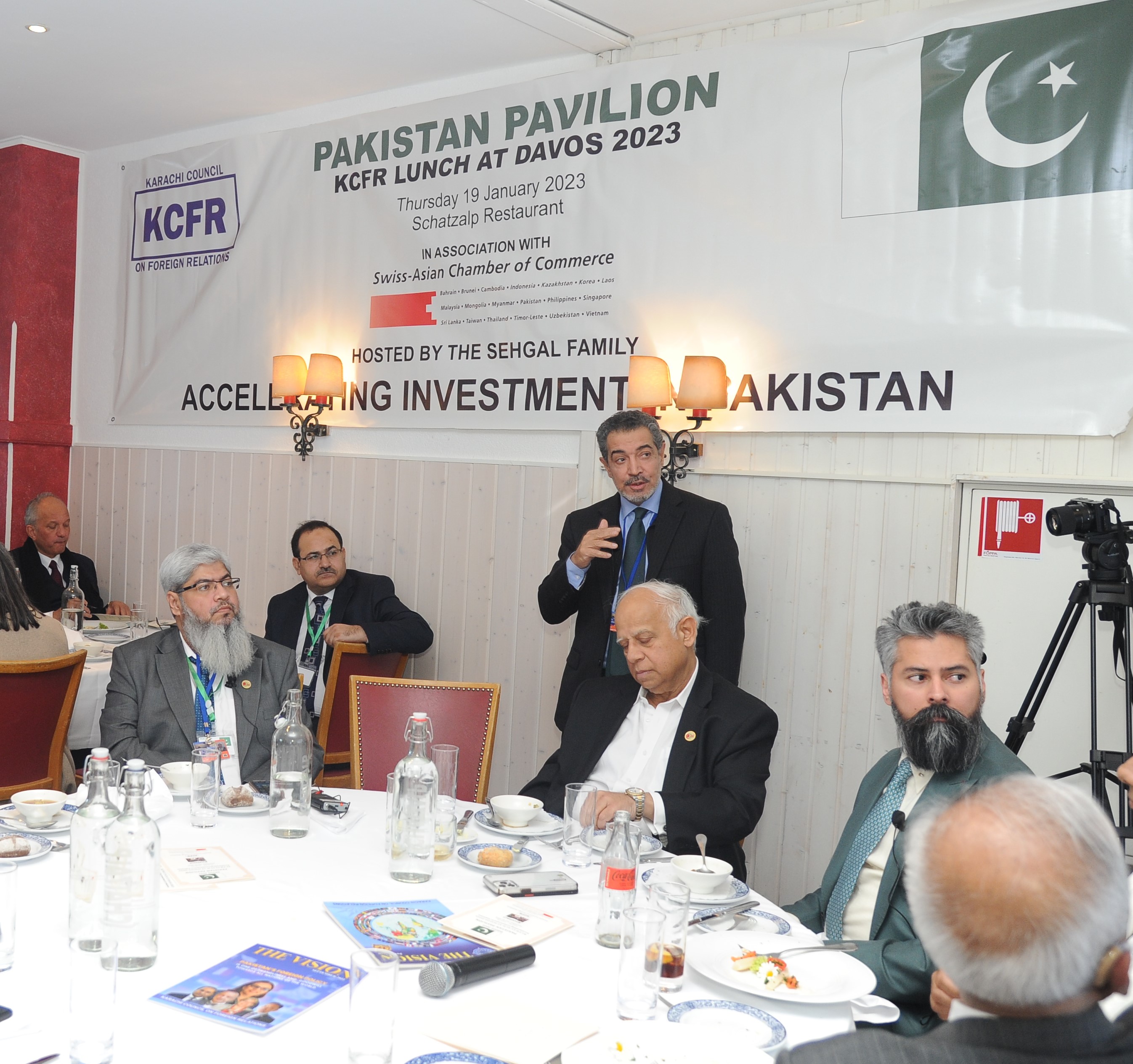
So for us as PMRC, we have done disbursements of about 43 billion in aggregate, our total outstanding at this time is about 26 billion is as of December 2022, and we continue to work with the market. We are a market player, there’s no other competition for us, we are a market institution and we lend to the banks at discounted pricing as I said, we’re trying to change that structure to fixed rate and we give discounts on fixed rate pricing for 3 years, 5 years, 10 years going up to even 20 years for mortgage financing. Our credit guarantee portfolio which was there, we have introduced that with the government of Pakistan and the World Bank also brings in. We have signed and issued guarantees which cover a credit risk up to 40% on a portfolio basis and the guarantee amount that has been issued is about 30 billion, and there’s another support coming in from the World Bank to expand that program.
Next slide please. We’ve already talked about women, these are some examples we have on our website, also that people and the families which have benefited. COVID; I’ve talked about some of the major benefits that the government has announced in terms of taxation and in terms of the State Bank, which reduction of the rate that happened in times of COVID when the interest rates were slashed down. Unfortunately, those interest rates came down, they have gone up back drastically as well, so we’re struggling now in terms of, as you know mortgage is a longer term product and at the interest rates of 16% – 18%, it gets very difficult for an individual to borrow at those types of interest rates, so we do hope that as this economy stabilizes, that these rates will come down but we are still giving these funding to our banks.
UBank is one of our major partners as well sitting here, doing a lot of low-cost housing, as I think Mariam mentioned and Kabeer mentioned earlier, so what is the housing problem and the construction problem.
Now housing, total stock of Pakistan this is a number from 2017, was 19 million that number, annual supply with annual demand of housing is about to 700,000 – 900,000, below 1 million and only about 250,000 to 300,000 gets added or the supply of housing comes in. If I can just extrapolate that number of 19 million has grown to probably now in 2022 to about 20 million, so that’s the total stock of housing in Pakistan. There is a huge proportion of informal settlements in the urban centers so 50% of our urban settlements in urban areas are informal, so there’s a lot of work and under the SDGs also, that’s one of the main requirements, that not only that you promote affordable housing, but we actually get people to move in from informal to formal housing and support them there, and get them out of slums as well. There’s a backlog of housing – the estimation is about 12 million to 15 million now, so there’s a huge backlog. Now the floods have, we have been talking about floods for the last two days also, the floods have really thrown us back, so that number which was actually at about 12 million to 15 million, in terms of the backlog will increase now as just about 2.1 million plus homes have been destroyed. Both partially and fully so these are very large numbers. Moving on to the next slide. So the total amount required not just for housing but overall for the floods, in terms of, I think Senator Sherry Rehman also mentioned that – in terms of livelihoods and others the support required is about 15 billion dollars in dollar terms. Housing alone is about 5.5 billion dollars’ requirement now, so there’s a lot of support and a lot of investment that needs to go into this. People are struggling, the government is struggling to actually get people back into their homes.
Grant programs that have been structured around people, partially damaged houses are getting grants in two phases, so that they can at least get back to their lives and start their lives. People who have fully damaged homes are also getting initial grant. They’ll get in three phases so that they can start doing some construction and help in terms of construction because we want to build now with the intention that this is going to be resilient housing. So it doesn’t happen that next year when the floods come, that you see that these homes have been destroyed again, so that is one of the major objectives as well. Next slide please. This was the population question or the problem that I earlier mentioned, so it shows some of the countries which actually are the size of the population growth in Pakistan, so one-year growth in population of Pakistan, and the size of which is equivalent to some of the country’s total population, anyway moving on to next.
I just want to talk about a little bit, so some things that I want to leave with you in terms of your thinking, in terms of the discussion if you want to have some, the problems that we have faced. Now what is the problem with the population. We need a huge amount of investment, every problem that we get leads to gives us an opportunity. Particularly on the front of the investment side for investors to come in, so for with the population growth, we need a huge amount of investment, one number in fact Senator Sherry Rehman mentioned yesterday, that about 8000 kilometers of road network has been destroyed, number of bridges that have been destroyed, the rail track network that has been destroyed, the 2.1 million homes that have been destroyed, so all this infrastructure requirement brings a lot of opportunity for investors to come in and help Pakistan as well as make a capital return on their investment into the construction industry, and the infrastructure sector. I’m just focusing on construction of houses and roads and bridges, but there’s a whole infrastructure, bigger infrastructure requirement as well – renewable energy, water, education, rest of it as well in order to bring resilient and sustainable cities, community development side. That’s a huge amount of work that needs to be done in these areas. FDI – you saw that graph going up and down. Why is that graph up and down?
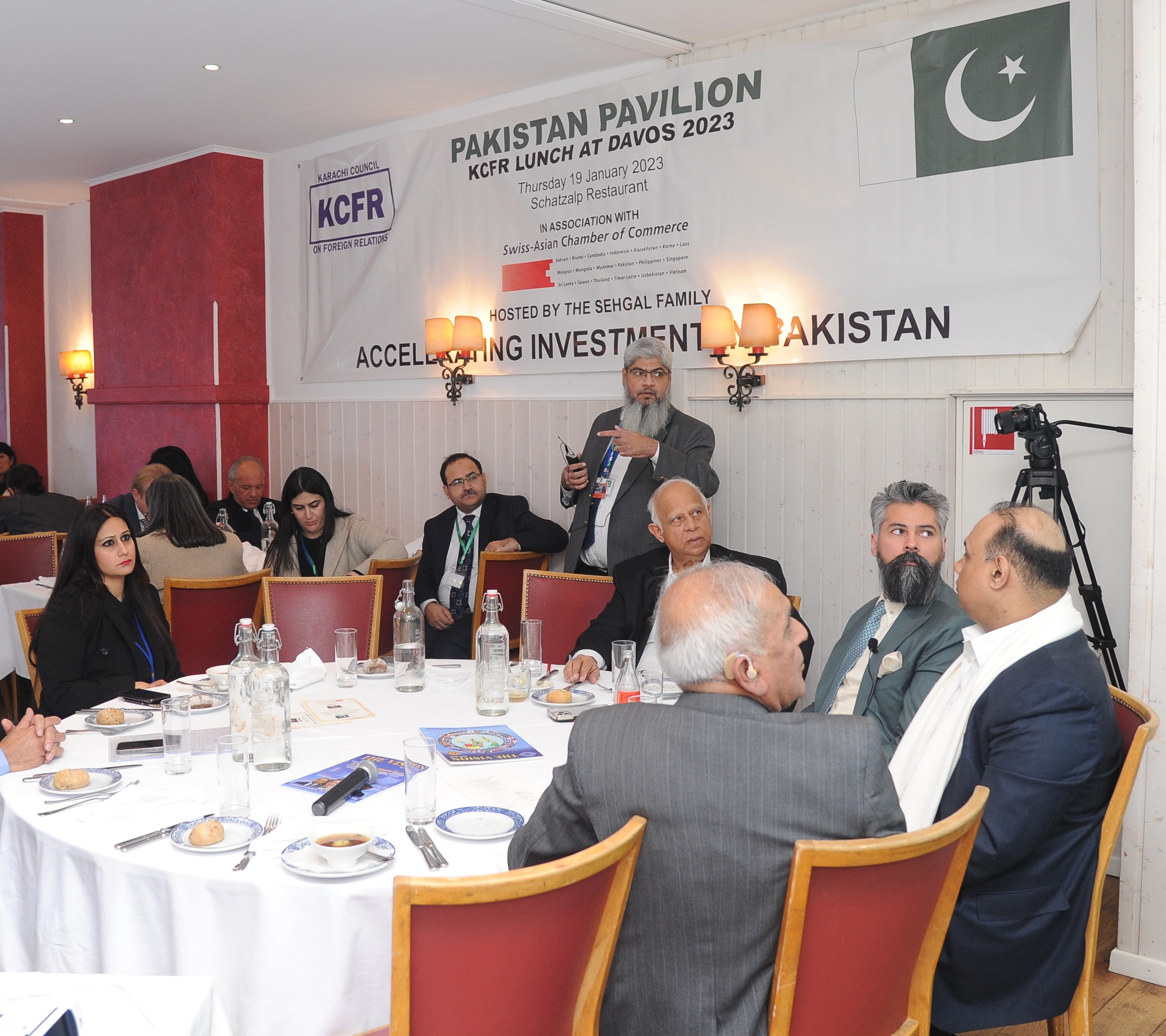
The reason is that our incoherent and inconsistent policies, that have actually led to that. Environment plays a role at our end, government is working on that and we need to fix our investment strategy, our policy framework, so that it encourages investors to come in, and not only that, it encourages foreign investors to come in but it needs to be there to allow local investors to come in. Senator mentioned today to all local investors also to come and participate, I’m a firm believer that foreign investment will always follow local investment. It will not lead the local investment but rather local investment is the one which will lead the foreign investment, so consistent policies is the other one.
The third one again is, when I mentioned about SDGs, and the progress that we have made there is a weaker side on our implementation and execution. We have lots of projects, we have lots of programs that we want to run but on the side of the government also, we need to focus on our implementation. Execution is the key, unless that is there, these things will continue to not get delivered in time. SDG goals require us to get these things done by 2030, which is already being discussed that this is not going to be achieved overall. I think globally but also in Pakistan we have a long way to go, a lot of catching up to do. In terms of red tape and transparency, all our projects need to be brought in. These are some of the problems that I, even talking to people here, who are from Pakistan, the businesses, the local businesses, we find that these issues are still there. We need to facilitate, the government needs to play that facilitative role, so that the local investment and foreign investment gets picked up and get Pakistan out of this mess that we are in right now, unfortunately, both in terms of the humanitarian crisis as well as economic crisis.
Last but not the least, I think one of the slide in the population numbers that I wanted to also target was, the age mix that we have in terms of our population. About 55% of Pakistan’s population is below the age of 25, so while that is an opportunity it can also be a problem, so we need to invest a lot more in our education sector for youth as well as the skill development, because not everybody will go and do their bachelors and Masters or PHDs, so we need to focus on education and we need to focus on skill development. And then lastly, I just want to leave that thought that we want the private sector to take the lead and the foreign investors to come and work with our private sector and to take this, the entire agenda that Pakistan has to fruition. Thank you very much for your attention.
Salman Ali, CEO – VRG: So, what we are doing in technology, what the opportunities are right now in the technology sector, where we have the mixture of technology, plus credits, loans delivery services, so how this can be clubbed and what are the new platforms which we want to show you and see your reactions on it. Also, how we can execute this and expand this by having a mutual relationship so, Mr. Imad.
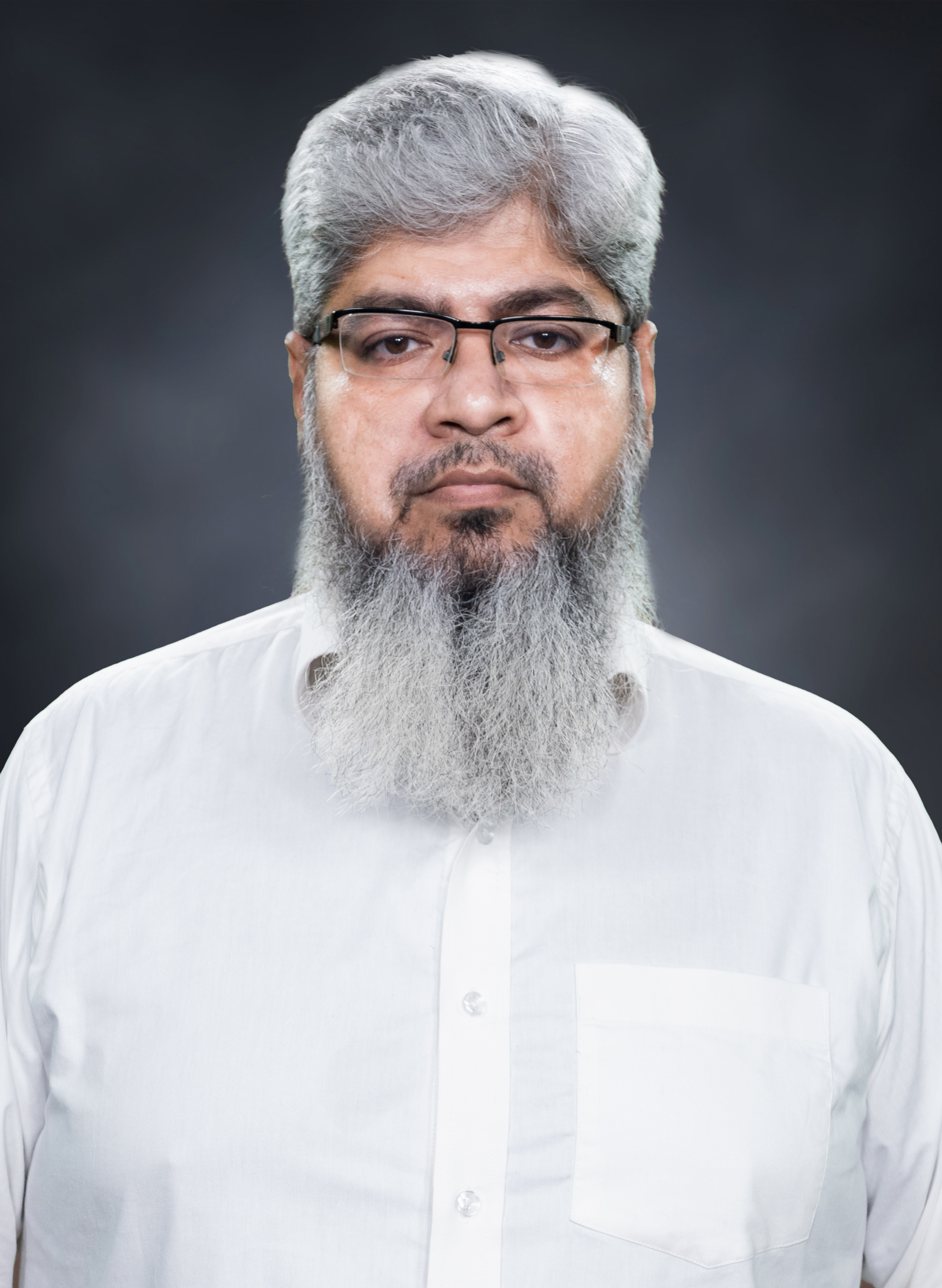
Imad Chishti, CEO – Futafut: First of all, I would like to thank Ikram Sahab and Zarrar for having the trust and belief in the concept behind Futafut. It’s quite a revolutionary concept not because what we are doing but how we are approaching it, so basically what we are doing is that we are building a digital marketplace for MSMEs. There are some unique selling propositions that we have in this concept and why we are different from all the other marketplaces that are there. What we are doing is that we are providing an online presence for the MSMEs, these small shops, grocery stores, clothing shops, pharmacies and many other MSMEs who are operating in Pakistan.
During Covid, these shops have lost a lot of customer footfall while transformation towards online shopping has happened, so what we are doing is that we are providing this presence, this opportunity to these shops to digitalized themselves and allow them to offer their products online to communities around them. That being said, just providing the delivery is not what we plan to do. We plan to become a lifestyle app. We plan to become the go to app for the consumers, for the retailers, for anyone who wants to access and use Futafut. So, I have a small presentation, I will take you through it. In Pakistan, you see that the banking penetration is still very low, so they are still around roughly 100 million people who lack financial inclusion, despite the penetration of all the mobile accounts, the utility of mobile accounts has not been very high. It’s because the payment infrastructure has not been flourishing a lot, so one of the core use cases of Futafut is to basically create utility of those accounts that have been established, so that people start using them for payment services. So some of the founding pillars that we have of Futafut, is basically, as I mentioned to provide financial services access to MSMEs, to digitalized them.
One of the important elements that we are building in our services is the element of trust. In Pakistan, although e-commerce and online commerce has been flourishing a lot. But there is one elephant in the room that nobody is willing to address, and we as Futafut want to hold that elephant, or that bull by its horn and that is cash on delivery. Cash on delivery, we believe, is a fundamental problem in our efforts in digitalization that is creating a lot of drag and friction.
A retailer or a shopkeeper, he can only rotate his capital once in a month, when he’s doing online selling. It’s because all the payments are being done in cash and the amount in time that it takes for that cash to come back to him, it takes almost a month for him to realize that cash. We as part of our strategy, we are not offering cash on delivery, this is a very different and altogether very risky approach that we are taking. Thanks to Ikram Sahab and Zarrar, this is something that we are bound to do. So with digital payments, we plan to reduce the settlement with retailers towards one day or two days at max. This will allow that capital to turn over multiple times in a month, which will increase the ROI for that retailer while he’s working with us.
The other thing that we are building in terms of trust is, we are trying to build buyer protection as well. One of the reasons why consumers want to do cash on delivery is because consumers don’t have trust in the marketplaces, in the retailers in terms of quality products that they are getting. So we feel that if we can have some element of buyer protection in Pakistan, which will be first of its kind, so far it’s not being offered for online services, it will create a huge difference in terms of people picking up on payments, and last but not least is the woman empowerment angle. So we have some dedicated projects, we have some dedicated work streams where we are building various services and various activities to empower women both in terms of entrepreneurship but also in terms of accessing these different digital tools that we are building through Futafut. As I mentioned that we have a very specialized program and this program is being led by a woman in our company and all the female workers that are working in Pathfinder group.
This particular initiative is being led by Nefer, who is our chairperson at Futafut, and she is the driving force. Nefer is here as well and she is the driving force behind all the work that is being done, under this work stream, so we plan to make this work stream a very effective work stream that will create a very positive socio-economic impact for women in specific around
Pakistan. These are some of the innovations that we plan to develop and this is where we are looking for investments in Futafut, because some of these innovations are extremely costly, because these are first of their kind. It will take time and effort and money to commercialize these, so for example Futafut Lane, this is where we plan to revolutionize retail shopping experience, in shop shopping experience making it digital. People walk in, people buy, people pay digitally and people walk out, so this will mean that people will not have to stay for 45 minutes or an hour into queues, they just buy, they just pay and they walk out. One-click payment, you like something, you immediately swipe and your payment is processed, your order is booked. Digital credit; this is something that we are working with UBank, it’s a very strategic partnership that we are doing, where we are providing three levels of credit services to customers. Nano loans, micro loans and financing loans, underlying loans will provide them airtime advances, data credits, riders’ fuel credit under micro loans will provide them grocery loans, buying for food, buying from pharmacy, clothing etc. Under financing will provide inventory financing loans for retailers, bikes for riders and other different loans.
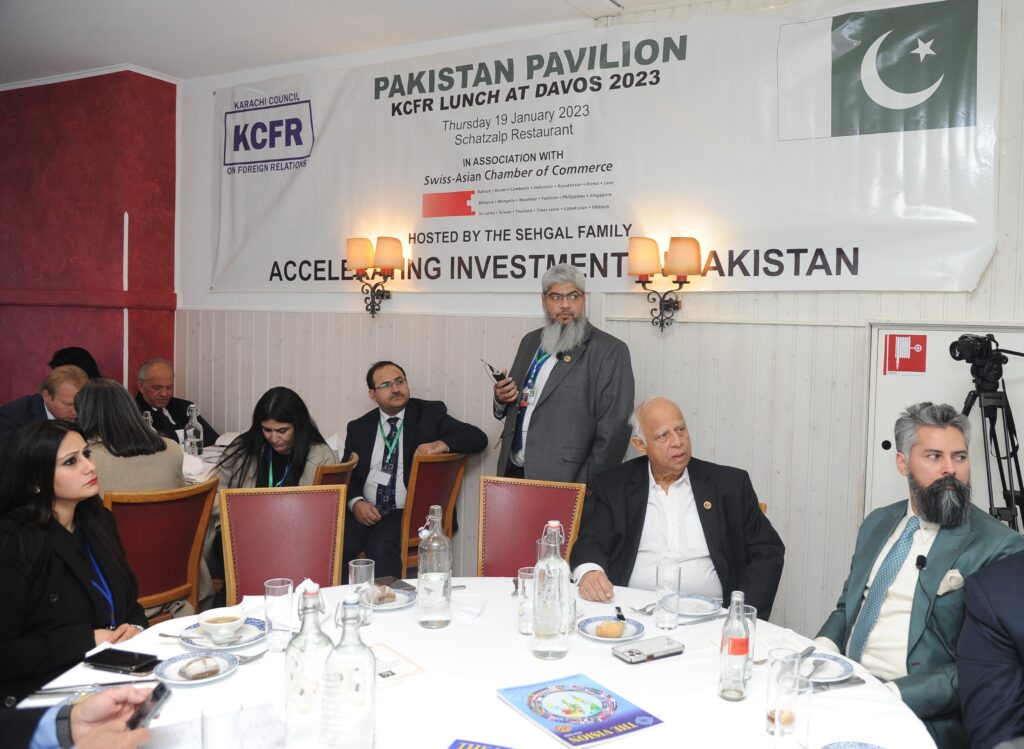
Over the counter is basically, you come to a shop instead of waiting in the queue to place an order, you just place an order through our app and the order will get delivered to you on the shop. This is what we plan to address, this is a contradiction in digitalization efforts in Pakistan, unfortunately, that industries are not willing to address, where the whole value chain is digitalized as the last mile – the most critical mile is not digitalized, it is cash on delivery, this is the status quo that we are challenging.
So we have a full bouquet of services, that we plan to offer through Futafut, so it’s not just limited to food delivery or grocery shopping. There is a full bouquet of services and that is why we call it a lifestyle app, a goto app for consumer, one app that will address all their needs. We have been doing a lot of activities thanks to the Pathfinder group and different companies under the umbrella that have helped in making this live, so we are working towards flood relief efforts as well. What we are doing is that we have certain products on our platform, you buy those products and we deliver those products to the needy customers and we even provide visibility on your donation disbursement which will increase the transparency overall. So we are not handing them cash, we are providing them the actual things that that they need, the day-to-day stuff that they require.
We have been using the network that Pathfinder Group companies already have on ground, and through that network we are making these disbursements. So yesterday, Ambreen mentioned about collaboration and partnerships. One of these strategic cornerstones that we have is to develop and build partnerships. We strongly feel that nobody can do things individually in today’s world, so we need a network of partners. We are a very young company, we are less than one year in market, but we have developed a network of different partners, UBank being one of these strategic partners for us but we have some interesting partnerships; I would like to mention Pink Riders.
They are a company who are training women out of the kitchen to ride bikes and to deliver goods and other things like men are doing. They are also helping disabled people do the same and more than that they are helping transgenders which is a hot topic in Pakistan these days, and help them come into formal economy, to come into respectable earning prospects. So these are the different collaborations and partnerships that we are working with. We have a very interesting product that we have, we will put in live and that is purpose-led remittances. Pakistan has a huge migrant diaspora outside Pakistan, roughly 8 million to 9 million Pakistanis live abroad, and they actually donate and they actively keep in touch with their families back home. What we want to do is that we want to allow those Pakistanis to be able to provide food and grocery and other things on the spot whenever they want.
Through this product, people living abroad will be able to buy food, surprise their families, buy a gift for them, allow them to provide grocery, monthly grocery to their homes in terms of purpose led remittances. This will by the way, also help for those blue collar workers working in Gulf states and other states. One of the interesting things that I would like to mention is that, these people don’t do savings in banks. They do savings through a middle person that is in their community. Reason being they don’t want to send all the money back to Pakistan because they feel that money will get wasted, so through this service we will allow them that if they want to provide groceries to their homes, they’ll be able to provide it while sitting abroad not in Pakistan. It’s a very interesting service that we plan to offer. So this is all about Futafut, as I mentioned that we are openly looking for investments to put in live some of the innovative products that we have and so, that’s all.
Salman Ali, CEO – VRG: Investment in Pakistan; why it is important and why it is valuable, let’s hear some words from the President of U Microfinance Bank, Kabeer Naqvi and see how this is going to turn around Pakistan and the landscape of Pakistan.
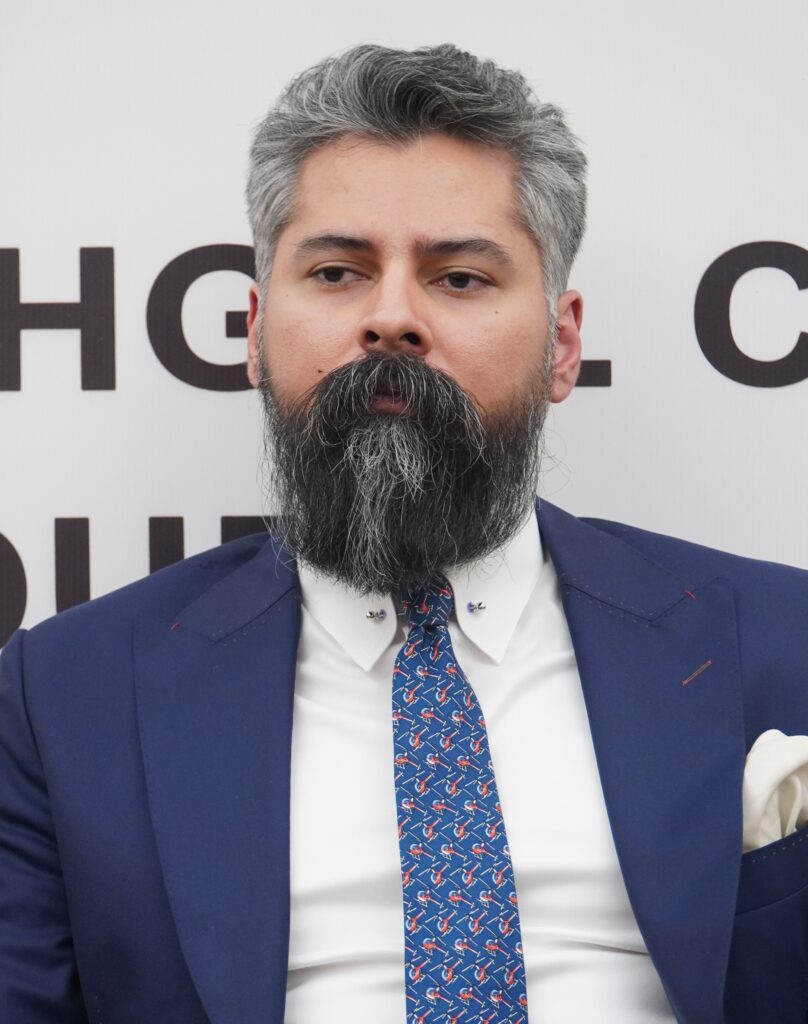
Kabeer Naqvi President, U Microfinance Bank: Thank you Ikram Sehgal, thank you Zarrar. Ikram Sahab has been very gracious for giving the opportunity to team UBank for sharing our vision, views and to talk about our potential collaboration which you just saw in the morning when we signed. Now, I will not go into much detail regarding UBank’s position as Marium did a great job in terms of sharing with you in depth as to what is our state of mind when it comes to investment and the lens with which we look at it, but I will in fact talk a bit about what we are doing in terms of local investment. We disperse around 7 billion Rupees to average Pakistanis in no-go areas, per se for regular high street banks and bulk of it, is not collateralized in certain areas, and the repayment behavior as I have been talking about it all along, is going to boggle your mind as I mentioned yesterday over the breakfast also that the repayment behavior of this strata of the society is phenomenal, less than 4% for the whole industry over the last 20 years or so.
Now, as Marium mentioned, that microfinance can be used as a case study for investment in Pakistan like nobody has seen it before, let’s use the UBank example. There is a Telecom Group, International Telecom Group, there is a Telecom Group that invested in the Pakistan, PTCL which is our major monopoly, government-owned telecom and then in turn they invested in a microfinance bank primarily to do branchless banking and I’ve repeated this story multiple times. I’ll share our numbers with you because they’re not private, they’re publicly available. We have received, I think about in money in Pak Rupee terms 5 billion to 6 billion rupees in capital investment by the shareholder over the last six years. Now for a microfinance bank that gives out, say thirty thousand Rupee loans or forty thousand Rupee loans, an international telecom group, having so much faith and continuous investment now, that says something.
Now the group is valued at about 65 billion dollars. They aspire to go to 100 billion dollars Insha Allah in next five to eight years. UBank is the only banking license that they have all over the world, they’re in 16 countries and the impression was that UBank is a bank of the masses. It deals with smaller ticket sizes. It can scale up to only a certain level, but that has changed. As my colleague was mentioning, we’ve got about a billion dollars in total assets, we were not even a fraction of it seven years back, that gives you an idea about the scale that you can achieve locally. So this Telecom Group invested in a momand-pop microfinance bank, the potential of the country that we always talk about when you deal with the masses. Any economy, if you don’t provide credit to the masses, to the MSMEs to the SME sector, there’s literature available all over the world and their studies, as countries have progressed economically start to take the economy upwards, so what we are trying to do is to mainstream our effort.
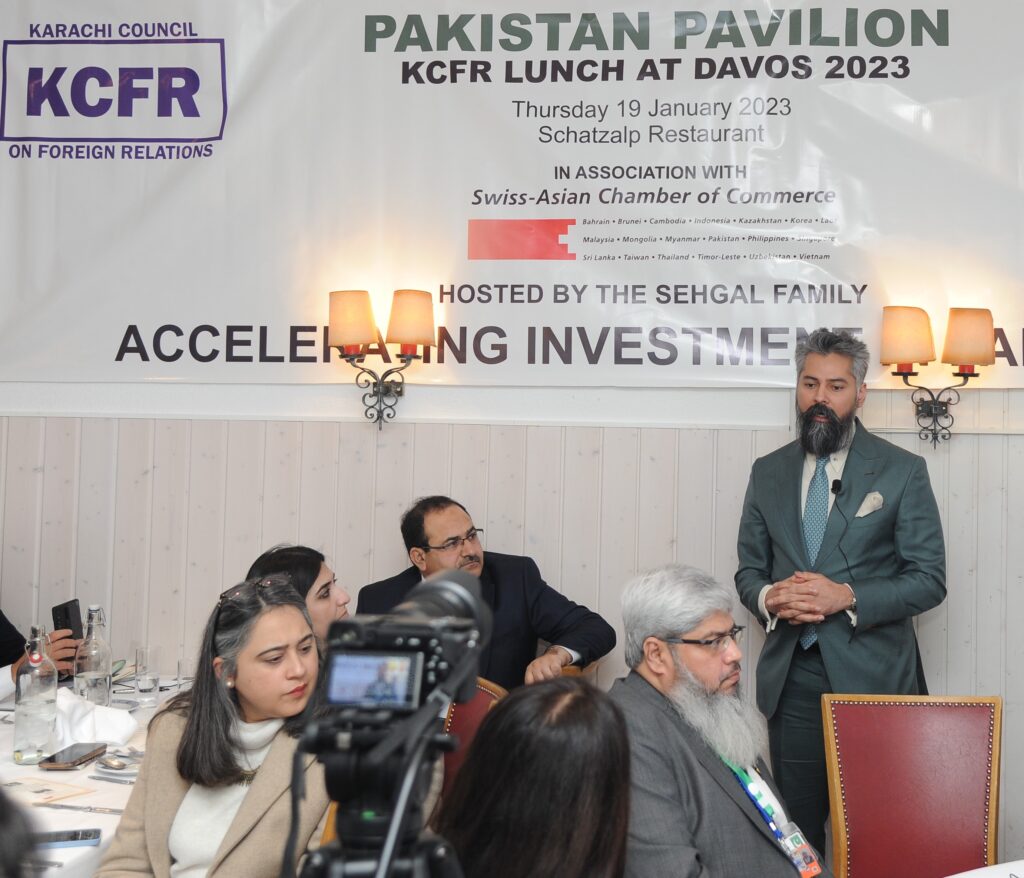
The reason why I’m here today again, I’m here for the fourth time is to mainstream microfinance, to mainstream banking for the masses, whether it is for savings or for credit. Because that is what actually moves the needle. With this I would want to once again thank the Pathfinder group, I would want to thank the KCFR. For instance, in fact I have to mention that, in terms of investment, Pakistan, KCFR along with the Government of Sindh has been doing a great job. There are multiple other initiatives that the government of Pakistan is taking and consortiums and companies like KCFR are taking to bring in investment in Pakistan.
Lastly, what I would want to mention here is that the private sector and the government sector has to work together, I can’t stress more but as a private sector practitioner, what we have tried to do here is that, while the enabling environment is coming up slowly, gradually, locally and for international investors, we have gone out of the way and we have tried to do our thing. As I was mentioning 7 billion rupees, I’ll repeat that number. I want you to take this number back. This is only one microfinance bank which has been there for seven years. We are disbursing around 7 billion rupees a month, average ticket size slightly over a hundred thousand rupees now, I’m talking about 25,000 to 30,000 loans per month and we’re just getting started. With 300 branches right now, adding a hundred more branches, so it’s a two-prong thing.
Local investment and international investment, you can’t divorce the two, so both have to come together to really have this fusion and have real impacts. With that, I would beg your leave. Thank you very much, have a great rest of the evening.
Salman Ali, CEO – VRG: We have a person sitting with us, with the best-selling magazine who’s actually covering all these stories since some time. One of the successful magazine and with the name of CEO Club, I want to introduce Mr. Ijaz Nisar, just to say few words that what his ambition is, what he has done for Pakistan and to showcase Pakistan to all levels including local and international bodies and what are the contributions he has made for Pakistan.

Ijaz Nisar Founder, CEO Club Pakistan: Bismillah-ir-Rahman-ir-Raheem. First of all, my note of gratitude to Allah Almighty, we are here and my real note of gratitude to one and only Ikram Sehgal sahab. The last 19 years, he is having this session by Pathfinder at Davos. So sir, I really salute you. I will request everyone, I salute the grit, the audacity and the confidence and the resilience of Ikram Sehgal Sahab, so please take a moment and a big round of applause for Ikram Sehgal. If I may be allowed, I request a standing ovation, because if it weren’t for him, we all would not be here.
Ikram Sahab, I believe in you, I love you, because you are raising the flag of Pakistan at Davos for the last 19 consecutive years despite all the challenges. Sir, whenever we come to Davos, this is my third visit to Davos, we come from Pakistan to Davos, we really feel Pakistani branding is very weak. We are talking about the investment, I say this is the Pakistani destination for investment, but we need two things for bringing investment in Pakistan, FDIs. The first is we need the image building of the country. Trust me sir, even Ministry of planning, Ministry of Investment, they are doing nothing to raise the brand of the country. This is your single initiative because you’re raising the branding of country. Secondly my request to all the CEOs who are sitting here and Shabi Ikram is here, Huma is there and
all the guys are there.
Everybody is saying to me that on the behalf of CEO Club, kindly form a collaboration with Pathfinder Group, and we shall commit to having a bigger presence than India coming year. At least, a 100 CEOs of Pakistan will come and showcase the success stories, and take the image of Pakistan to the next level, and we shall not come here for entertainment but for business transactions and showcase our projects and show the world that despite all the challenges, we are not beggars, we are not looking for donations, we believe in trade rather than aid. The narrative needs to change of Pakistan where an entrepreneur is deemed a criminal. We think that he is not the right person, but trust me, Pakistani people, and my last words. I am creating a platform of 1000 CEOs, Pakistani overseas entrepreneurs and CEOs. If we want to change the destiny of this country, so this is the diaspora of the overseas Pakistanis who are the unsung heroes. We can bring together on this platform of Pathfinder and CEO Club. With these words, I salute once again sir, for bringing people at Davos. Thank you very much! There will be a small announcement by Sir at the end of the session.
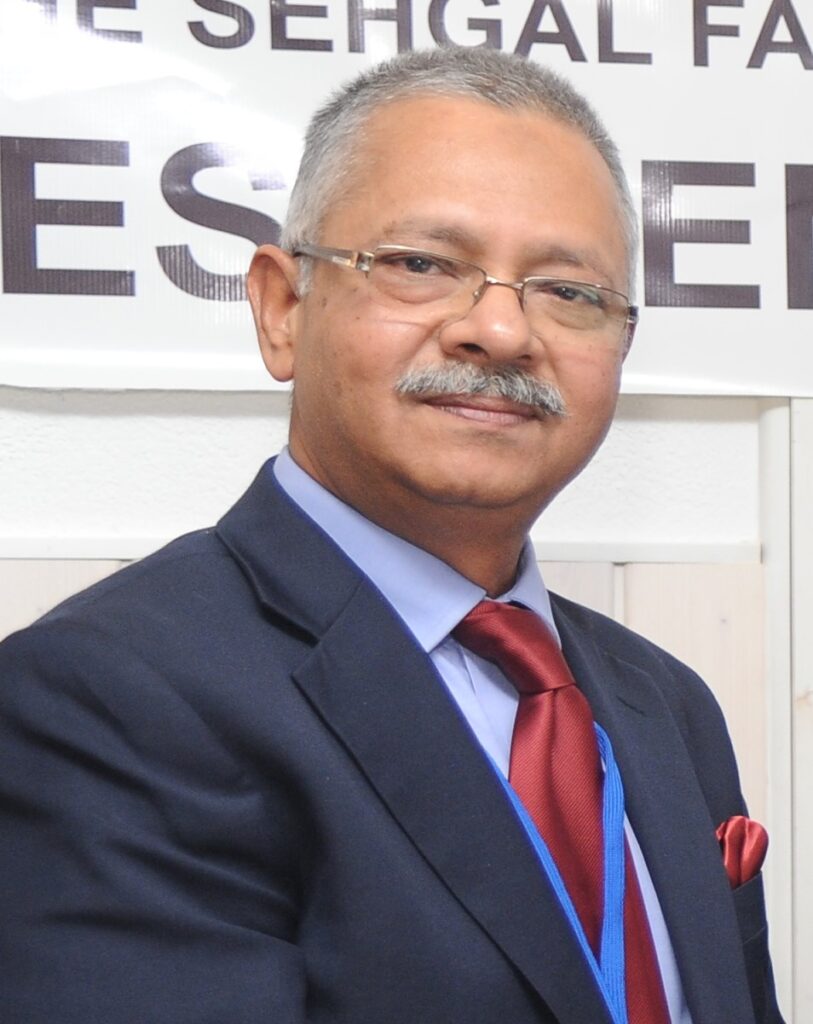
Shabeeh Ikram President, CEO Club Pakistan: Thank you very much! We are really honored, that Ikram Sahab has allowed to present all the successes of the CEOs of Pakistan with the rest of the world, and for that on the behalf of the CEO Club, we are grateful. Ikram Sahab, who has always been our patron, I’ll ask Ikram Sahab to cut the ribbon of this book and open the ceremony.
Salman Ali, CEO – VRG: So ladies and gentlemen some closing remarks on this evening from Ikram Sehgal.

Ikram Sehgal Co-Chairman, Pathfinder Group: I would like to say, thank you for coming for this event, but thank you to all those people who have journeyed particularly from Pakistan all the way here, CEOs to come to Davos to attend all our four events. To start with, I want to thank UBank for hosting the Pakistan breakfast with us and they did it without question, immediately. I must tell you, frankly that we were at that point of time thinking seriously of whether we could even host our three other events because really, there is a limited amount of money that you can pay anywhere. UBank came through and we actually had sponsors for three of our other events who were talking to us for months and very rich groups and all, talk about how they wanted to promote Pakistan’s image, but suddenly my calls were not returned. Three events we did on our own and that is why I’m especially grateful to Kabeer that you came in for the largest event which cost us the maximum, and really was very good of UBank.
I find Pakistani businessmen, I’m sorry to say, do not want to put their money where their mouth is. They talk a lot all the time, we want to promote Pakistan, but when it comes to promoting Pakistan at Davos, where it matters, I’ve had, except for one gentleman, called Javed Akhai who unfortunately passed away three years ago, and he came forward. He and I went for six years, we hosted all the events together and he would not listen to anything. He just said no, I trust you, go ahead and do these events. Make it two, make it three, make it four, when he died, we were initiating a shop and a big place on the main street, ultimately, he felt sick and we couldn’t do it and his children wanted to continue but after two years they also gave up. Really, if you want to promote Pakistan’s image, you’re going to step up and be counted. You can’t just talk about it, and that is necessary and we have been very successful. We cannot really compete with India on main street but the fact of Pakistan being there is very important.
I’m really astonished at my employees. I cannot thank them enough. Nowhere in the world you’ll find that anywhere there are three CEOs here who have been putting up the signs handling the stuff. CEOs of my companies and down the line it’s been a logistical nightmare. Think about it. How many hotels, how much transportation in Davos itself, the cost, moving people around and also doing it in a far away country, but the core people and let me tell you, each of them and I commend Salman CEO of VRG, our flagship company in the Financial Services Technology Division and Tassawur, i3Pathfinder, who’s there as you can see, still standing and somewhere standing in the corner there, the man who created it all Ali Shah.
I know nothing about finances or very little and nothing really about technology, and Ali Shah used to bounce ideas of him, layman’s ideas, which of course I must commend, Nefer, my daughter, because she came to me first with this idea. Ali Shah said, this can work, this will work. Today, my proudest moment was like I said at breakfast today, when Mirek Dusek said that we are considering you as a lighthouse country. Can you imagine, at the two lighthouse countries’ presentations, there were the ministers of the country, there were the state bank officials, there was the Economics Ministry people there.
There were six of them from the Ministries and institutions, we are being considered for lighthouse country and our ministries are trying to hold us back. Our State Bank; I would like to tell you this you, the State Bank sent an inspection team to us a few days ago when they knew the whole hierarchy is leaving and let me tell you very proudly that people who were there ran operationally and answered every question because it’s a running thing. As I told you, the State Bank gives target of 3 million, you’ve gone over 7 million In sha Allah, this month alone. I think we’ll be hitting 8 million with the UBank coming in, yes after Kabeer and Ambreen start hitting on the heads of their IT people. So what I want to say is that you know every day that I go to bed, I say to myself, I say Pakistan, thank you for being my country.
I have fought two and a half wars for this country. I got a battle field promotion to the rank of Major, a Rifle Company in Pakistan is named after me in my unit, but nothing so proud as to project Pakistan’s image outside. I have a lot of friends, some of them are sitting there at the back. I can see Mark Siegel whose first Yom Kippur in Pakistan, we celebrated, and you know Joe de Blasio, and Tauqeer Khalid.

I must not forget Imran Chaudhary, Imran where are you? There you are, right. We go a long way, friendships endure all and I must remember, the Swiss Asia Chamber of Commerce. The Swiss Asia Chamber of Commerce led by the President, Urs Lustenberger, who’s here and I must thank you. Your support to us has been extraordinary, Barbara is beyond extraordinary. Now the way she responds to us and I tell you, luckily you have a Pakistani wife sitting next to you, at least in the dress she is. Get up Dr. Ying, show your dress. Isn’t it? So she’s wearing a Pakistani dress today. I must thank my family, I passed on the baton to my son a few days ago. 19 days ago, he became the Chairman of the company, I became co-chairman. I thought it was time I didn’t sort of be like King Charles wishing for the death of his mother to become king, so I said let it go earlier. So the family of course; my wife, my daughters in their own ways brilliant people, totally different from each other. Nefer, does her own thing. Haya, her painting was tremendous, her writing is tremendous; she is considered one of the prominent writers in Pakistan so I’ve stopped writing, but I don’t want to get compared with her anymore, but Nefer, always full of ideas, comes up with an idea and proudly, because Haya opted out from being part of Futafut, Nefer is a Chairperson of Futafut and she keeps, like Imad said, she comes up with ideas which are very relevant.
I want both the people who come from Pakistan and people outside that Pakistan is a great country. It’s one of those few countries that can actually feed itself and clothe itself in the world. We do not do that for many reasons and I’ll tell you. I want to talk about the extraordinary partnership we’ve got with UBank, suddenly we’ve got the financial institution. You can have Roti and Kapra, but where you get where do you get a Makaan until you have a bank account, so all the talk about Roti and Kapra for 50 years was just talk. Roti, Kapra and Makaan; you cannot have Makaan, a building, a house without a bank account, and then low-cost housing like Mudassir mentioned. So, we are looking forward to dynamism. I just realized that one of our products which has been dormant for some time for some reason, was my MediPort. That is something that was tailor-made for Pakistan because of the insurances. Obviously without proper check and balance, you could not really have a health insurance scheme. We know that because we have our own health insurance scheme in the company and we know that a lot of fraud happens there, where people turn up with a lot of diseases happening overnight, so my MediPort also, we’re going to try and see if we can work together in that but at the end of the day I will again tell you that, it is time we started attracting investment into Pakistan.
Without attracting investment, we will be left behind and why should we be left behind. Why, because of wrong ideas and wrong perceptions. In fact, I must acknowledge my friend Yves Manville. He’s come all the way from Paris, he was a Deputy Head of Mission in Islamabad, and he rightly told me. He said, you know, whenever you go, you try to go sell in Europe, sell in the United States but what about the rest of the world? What about Africa, so we are working with people that he recommended to us to work in Africa and we want to work like that.
Frankly speaking, we are talking to some very big groups in the Middle East on how to take this Assan Mobile Account and Futafut into developing Muslim countries. Because that is tailor-made for them, because the software is there, the idea is there. We’re at the moment, we are talking about 6 – 7 companies from the Middle East who are all interested in how they can invest in us and we can then go out and there’s so much grants available with the Islamic Development Banks, so much soft loans available, that you can really bring for digital financial inclusion. Or as Ambreen has put it; “figital”, we can bring that into the lives of people. You have to bring women into financial inclusion, that’s how Bangladesh came up when they brought women into financial group. That’s how rest of Southeast Asia came up when they brought this thing, so at the end of the day we must look for ideas.
I again want to thank all of you who have come here and I know you want to talk to each other and I’m grateful for you for keeping quiet while I’m talking. So please go ahead and talk to your heart’s content. Thank you everyone, thank you for being here.




